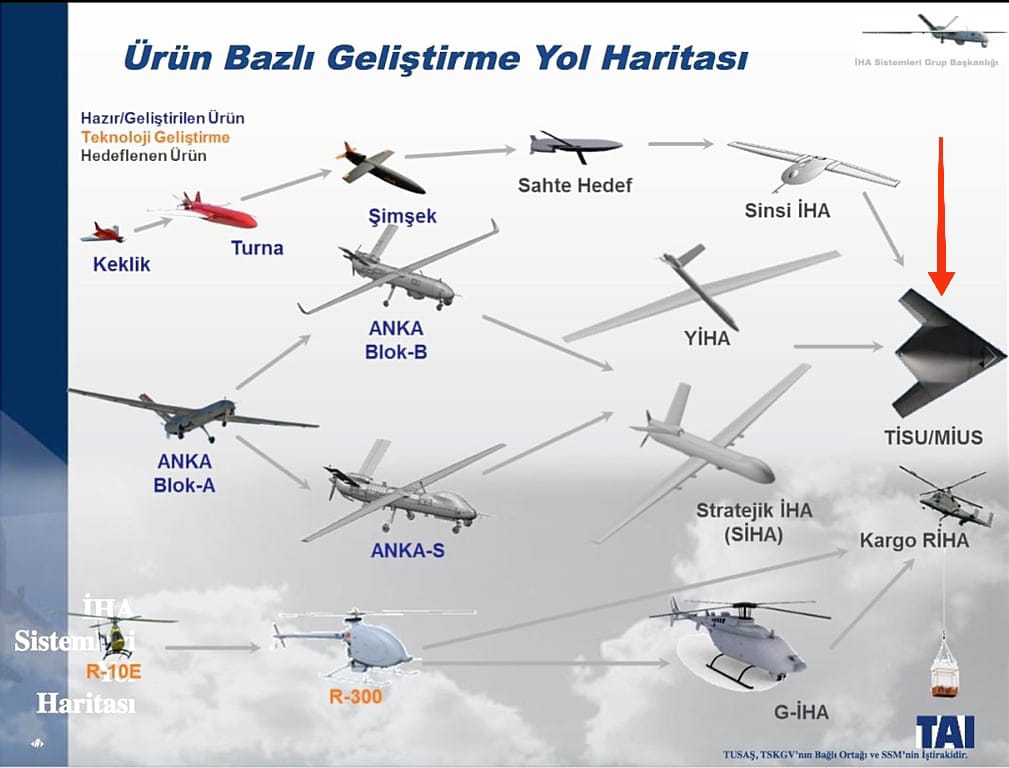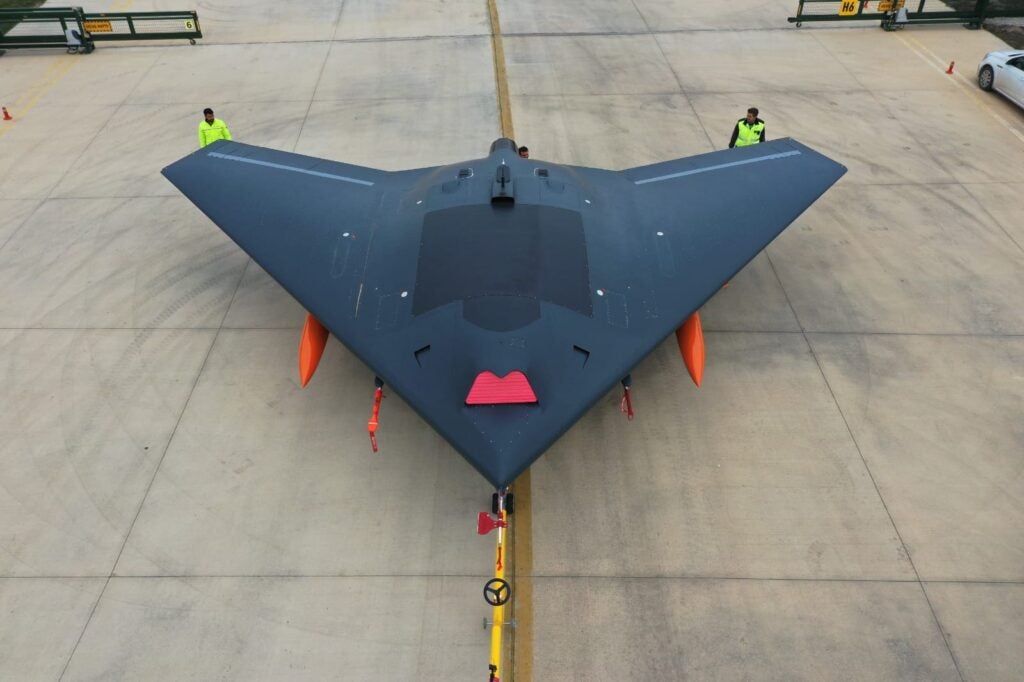Turkey Reveals The First Images and Specs Of The ANKA-3, Its Newest Flying Wing Unmanned Combat Aircraft
Prof. Dr. Temel Kotil, CEO of TAI, released the first images of the ANKA-3, Turkey’s first flying wing unmanned combat aircraft developed by Turkish Aerospace Industries. Kotil shared images of HÜRJET, TF-X, and ANKA-3 on his official Twitter account, saying: “We have kept our promise to our nation in the Century of Turkey. MMU (TF-X) and HÜRJET taxied, ATAK 2 will start its engine soon, and ANKA 3 will make its first flight. We present our products, which we have developed together with thousands of colleagues and business partners, to the martyrs of Çanakkale.”
The TAI CEO revealed the drone’s technical specifications at the 4th Military Radar and Border Security Summit in Ankara, just two days after revealing the first images of the ANKA-3. The jet-powered ANKA-3, which will have a take-off weight of 6,500 kg and a payload capacity of 1,200 kg, will be able to stay in the air for 10 hours, according to Kotil’s presentation. The vehicle, which will have a service altitude of 40,000 feet, will have a cruising speed of 460 km/s and a maximum speed of 800 km/s. The total length, wingspan, engine power, and curb weight of the vehicle were not included in the presentation. However, according to a DefenseHub analysis of the ANKA-3 image by Moz68k, the platform has a wingspan of 12m and a length of 9m. The ANKA-3 is thought to be powered by an AI-25TLT or AI-322 series Turbofan Engine developed by Ivchenko-Progress. Previously, Baykar Defense, another Turkish drone developer, signed an agreement with Ukrainian engine manufacturer Ivchenko-Progress to procure AI-322F and AI-25TLT jet engines for the Bayraktar Kızılelma unmanned fighter aircraft.
The ANKA-3 is expected to have a low radar trace due to the lack of horizontal and vertical stabilization in the tail design and the weapon station being housed in the fuselage. ANKA-3, which will be equipped with both a within visual range and beyond-visual-range communication data link, is intended to perform tasks such SEAD-DEAD (Suppression-Destruction of Enemy Air Defense), ISR (Intelligence, Surveillance and Reconnaissance) and Electronic Warfare.

TAI’s goal of developing a flying wing unmanned aerial vehicle was first revealed in a presentation on December 24, 2015, at a panel titled “Turkey’s UAV Roadmap with Developing Technologies,” which was jointly organized by SETA, SSB and STM. 7 years later, the flying wing unmanned combat vehicle ANKA-3, which appears on the TAI Product-Based Development Roadmap, was first announced on December 16, 2022, during Turkish Vice President Fuat Oktay’s speech at the Turkish Grand National Assembly’s General Assembly. “Our new type of unmanned jet fighter aircraft is coming from TAI, this is our new good news,” Fuat Oktay said in a statement on the subject. “Our new generation project, ANKA-3 MİUS, will take our capability in unmanned aerial vehicles to the next level. ANKA-3; With its jet engine and speed, high payload capacity, and tailless structure that is almost invisible on radar, will open a new chapter in the field of UAVs. Next year, I hope we can continue to share the good news from our ANKA-3 MİUS project with our nation.”
Turkey is already actively utilizing the ANKA MALE UAV systems developed by TAI as part of the ANKA-1 project. Anka UAV systems, which come in three variants, ANKA-A, ANKA-B, and ANKA-S, have been exported to six countries: Tunisia, Kazakhstan, Malaysia, Indonesia, Chad, and Algeria. The Turkish Navy, Air Force, and Special Missions (National Intelligence Organization or MİT) are currently using the AKSUNGUR UAV, which was developed based on the experiences gained from the ANKA MALE unmanned aerial vehicles as part of the ANKA-2 Project. So far, Aksungur has been exported to two countries, Kyrgyzstan, and Angola.

